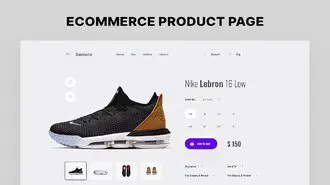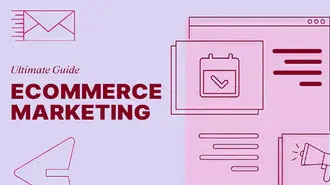Summary / TL;DR
Improving your conversion rate on an eCommerce campaign helps to increase revenue, reduce advertising costs, and strengthen customer retention. A healthy average conversion rate sits around 2%, though this varies by industry and product type. Key strategies include optimising site speed to keep users engaged, simplifying the checkout process to reduce cart abandonment, and enhancing trust with social proof like customer reviews. Tools such as Google Analytics, HotJar, and BigCommerce Analytics help track visitor behaviour, identify issues, and refine targeting. Providing detailed product information, using high-quality images, enabling live chat support, and offering guest checkout options further enhance conversion rates.
After investing years in building your online store, it’s reasonable to anticipate a thriving eCommerce business with regular customers.
Mobile commerce has seen a significant rise recently, particularly as more individuals are studying and working from home, thanks to the promoted benefits of mobile shopping. Rising businesses tend to focus on increased webpage traffic, and that’s a perfectly understandable goal, but is that enough?
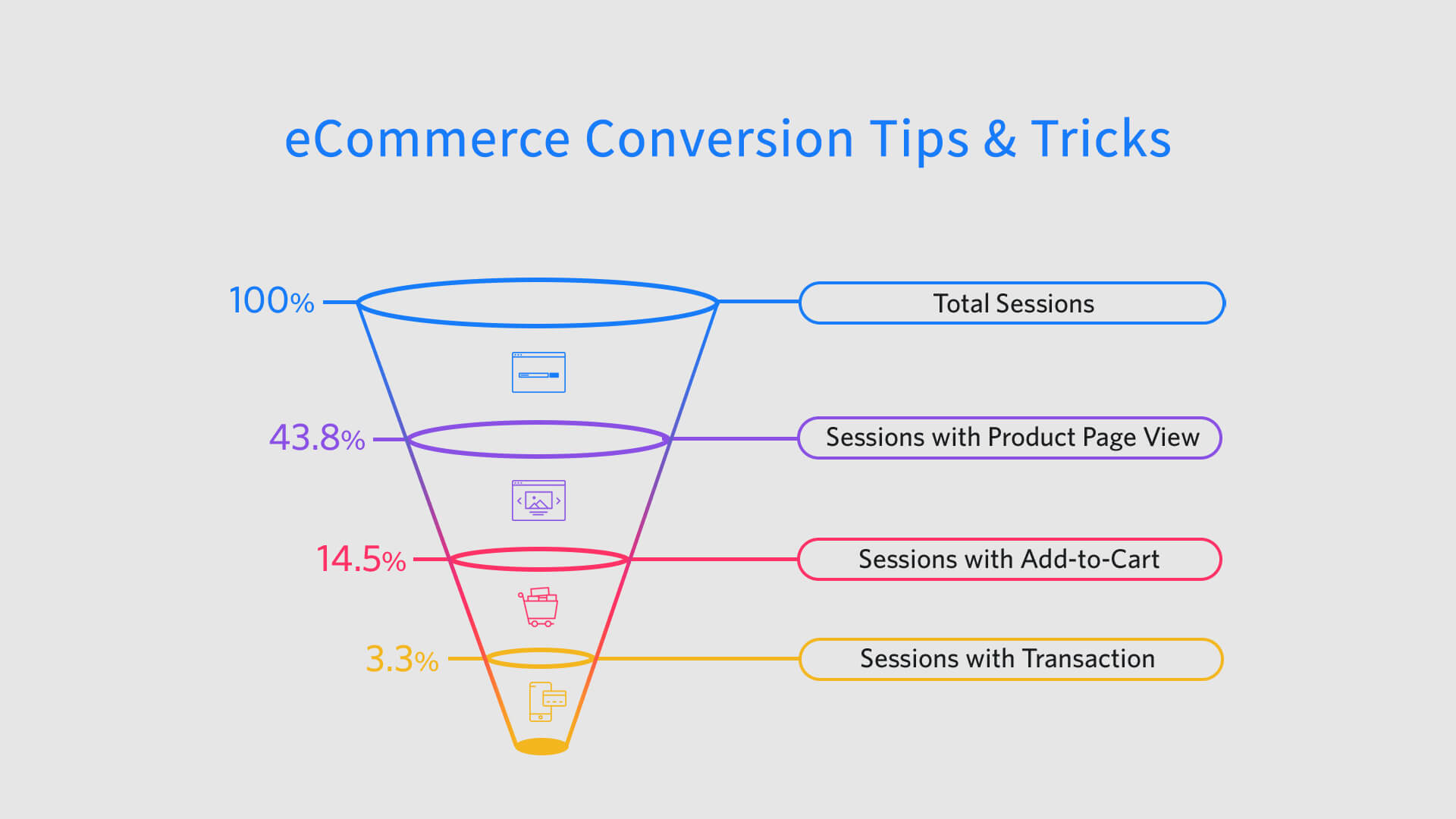
Focusing on eCommerce conversion rate optimisation might just be more vital than simply boosting conversion rates in your digital marketing strategy.
If your eCommerce store isn’t seeing enough paying customers, just boosting sales or traffic isn’t the ultimate solution. If past attempts to increase traffic haven’t bumped your conversion rate, what’s the next step?
We’ll dive into some basic steps in this article, but first, let’s explore conversion rate optimisation. We’ll also guide you in calculating your store’s conversion rate so you can figure out the boost needed for increased sales.
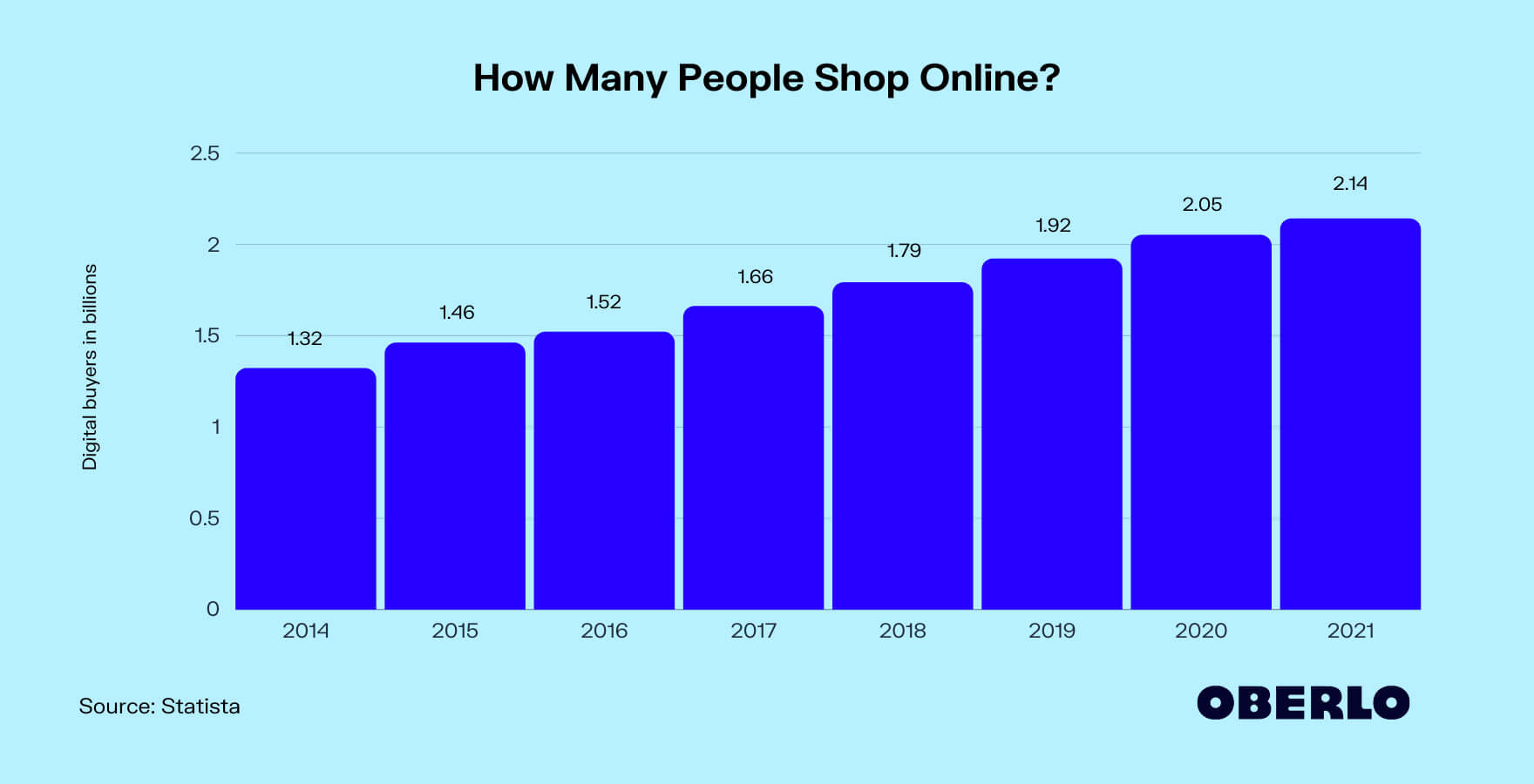
What Is The Conversion Rate For eCommerce?
In short, the conversion rate is the percentage of people who visited the online store and made a purchase. Usually, stores use conversion rates to indicate their business’s success. And although sales are the best for an eCommerce website, a few other things also count as small wins.
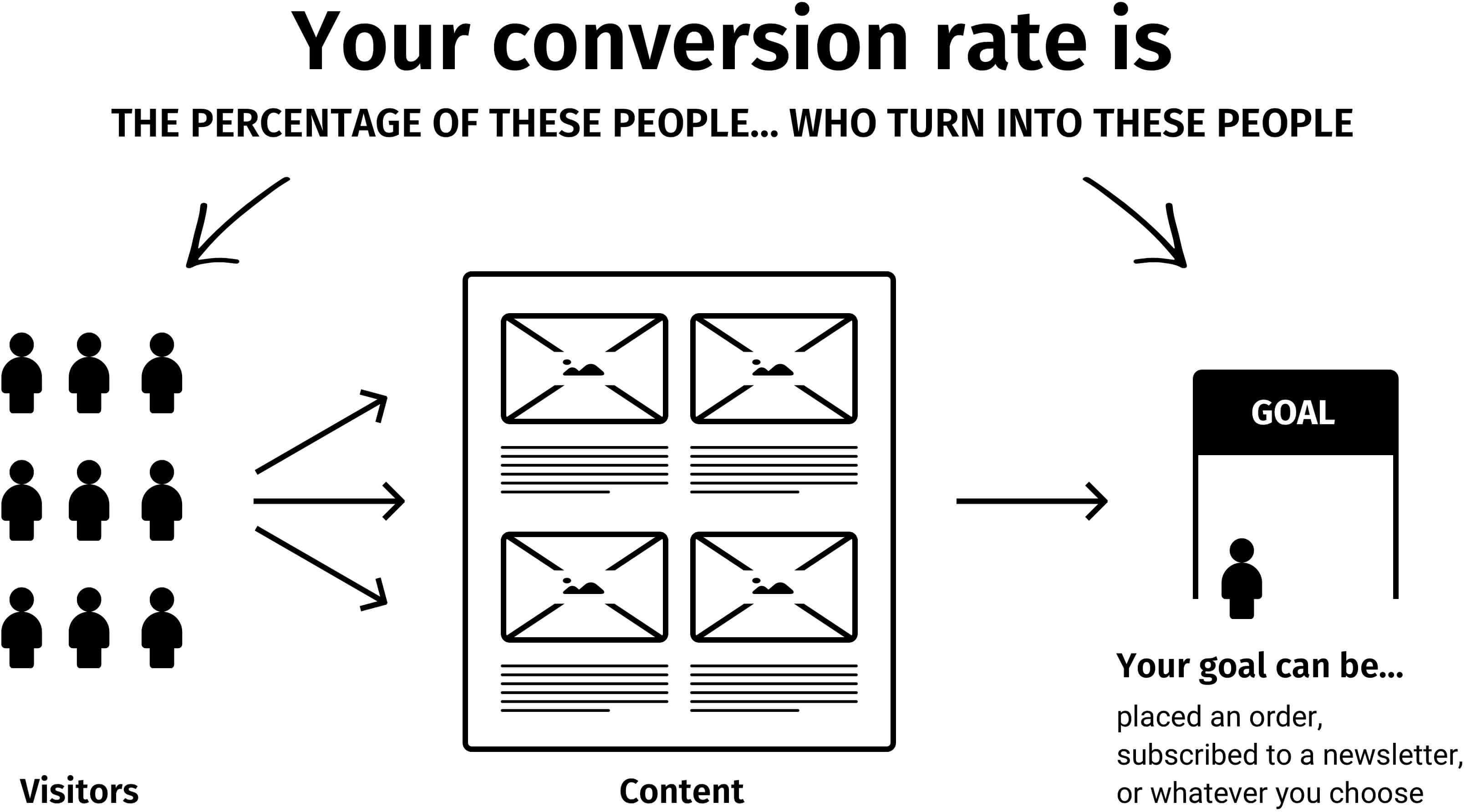
Along with online sales, use customer interactions to gauge conversions, such as:
- When the customer adds a product to the wishlist
- When the customer saves the product to view later
- Shares on social media
- Email registration
Want to receive updates? Sign up to our newsletter
Each time a new blog is posted, you’ll receive a notification, it’s really that simple.
What Is A Good Conversion Rate For eCommerce?
Here’s the reality: the average eCommerce conversion rate is about 2%. It might not seem much, and you’re right—it isn’t. But if you’re just starting, make sure your value proposition is spot on to hit this target.
Note that factors like industry, target audience, and product cost will change the conversion percentage. The average conversion rate will also differ depending on the type of eCommerce industry.
Why Does eCommerce Conversion Rate Matter Anyway?
Are you wondering how to increase the conversion rate in eCommerce? Why do you need to worry so much about it? As it turns out, there are many reasons to focus on conversions besides the obvious reasons of increasing your conversion rates and having higher visibility.
A. Earnings
Indeed, higher conversion rates, particularly on mobile devices, translate to more revenue. But, really think about it for a minute. A higher conversion rate increases your revenue from online customers and reduces your advertising budget.
B. Increased Website Value
Many things add value to optimise your site. Adding clear copy, proper landing pages, ensuring an enhanced customer experience, decreasing ambiguous information, and adding quality content are great ways to increase website value.
A reasonable conversion rate also attests to your company’s value and consequently enhances the perceived lifetime value for high value customers, automatically boosting your website’s worth.
C. Remarket Or Repeat Customers
We don’t know anything about your eCommerce store. We only know that the best place to get a bunch of future sales is from the list of your past buyers. It’s true; remarketing will enhance your sales conversion funnel more than any other target group. But the catch is that you can’t have repeat customers if you don’t get the first sale.
But remarketing to them is a smart choice once you have a sizeable group of first-time purchases. This group is more likely to purchase your product than new people unaware of your eCommerce site and brand.
Winner Takes All Theory For eCommerce Conversion Rates.
This is a concept that might need an in-depth explanation. There are several games based on a “Catch-up” structure for children’s games. This means whenever the leading player inches closer to the end of the game, some obstacle can pull him back.
In a game like Snakes and Ladders, this adds an element of unpredictability, thus making the game fun.
However, there are other games in which the leading player always wins. Businesses must have seen this in effect, too. Another popular kind of competition in every eCommerce sector is the winner-takes-all situation. This model, also called “Slight Edge,” is one in which only the winner receives the entire prize.
Thus, the winner gets stronger, more competitive, and continues to have the edge over its competition. In short, you can call it market domination. This principle forms the core of what eCommerce sites are all about. Even minor differences between companies allow one to emerge as the overall “winner.”
However hopeless as this may sound, there is a solution to surviving and thriving in a competitive online space. The most obvious method for eCommerce is to increase the conversion rates. When you have a high conversion rate, you are winning.
In a competitive environment, it’s not enough to be good enough, as you constantly strive to improve the conversion rate of eCommerce. In the online world, a market leader gets it all. So, when it comes to your niche, make sure you are that leader.
Calculating Conversion Rate For An eCommerce Website
Let’s say 1,000 people visit the online store, and 10 of them purchase one or more of your products. In this case, your conversion rate is 1%, and you should aim to increase it to at least 2%.
Divide the conversion number by the total number of visitors to calculate the conversion rate percentage. Usually, you should consider the number of visitors within 24 hours to get this rate.
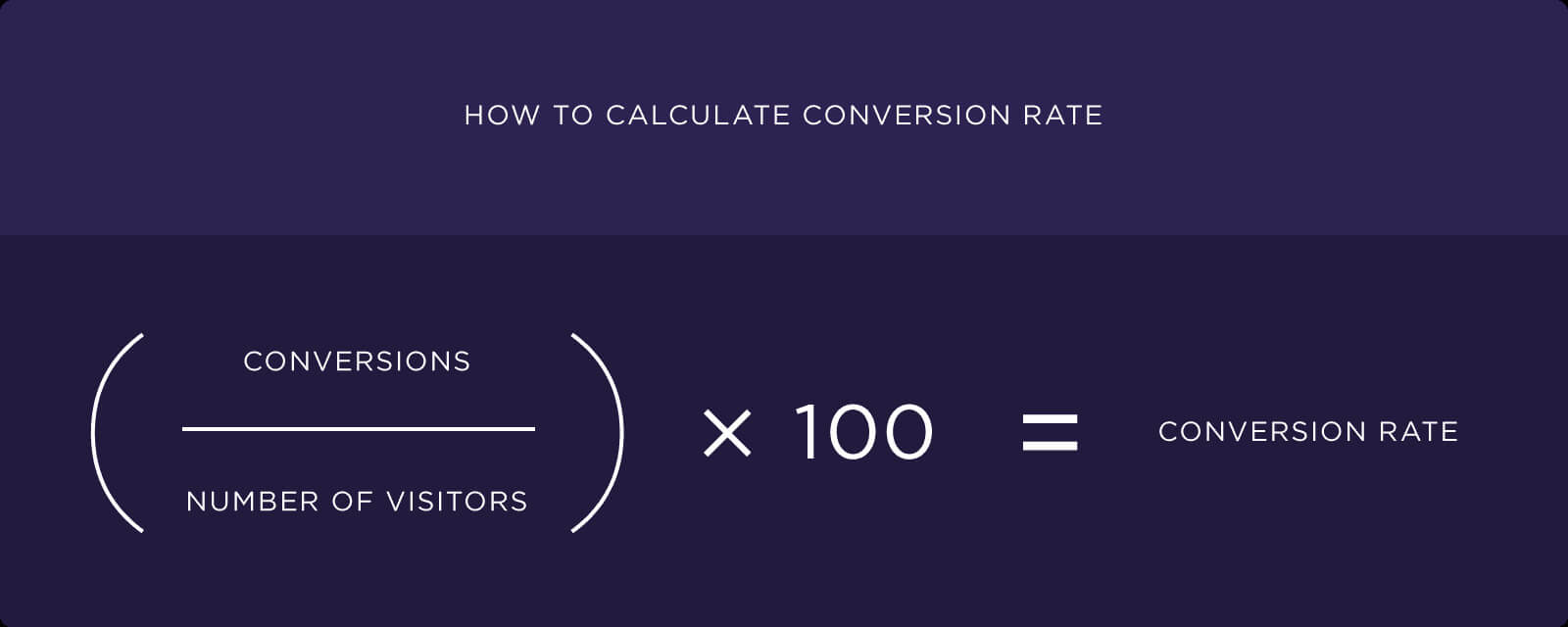
You can also opt for different statistics when conducting market research. Select specific age groups and use other locations to understand which group frequently purchases to boost sales from your website. With this data, you can identify the contributors to your eCommerce site and get more insights into why the conversion rate is the way it is.
So, if you’re feeling ambitious and aim to increase the rate to 3% or maybe even 5 %, we’ve got a few steps you should follow.
Tools You Can Use To Increase Conversion Rates
1. Google Analytics
Most websites, particularly when optimising their site’s search functionality, often collaborate with the sales team and can derive substantial benefits from the insights provided by Google Analytics.
The Google Search Console feature gives you a general idea of users’ commonly applied keywords. These people may or may not be coming to your website, but you will understand the trends and what people seek.
This feature is helpful because it shows you errors on your website that can be improved to attract more users. People do not want to wait more than a few seconds to open a website; that’s a fact we have to live with.
So, it’ll be helpful if Google Analytics can point out if the page is loading slower than what’s considered normal. Or if you have a page with a broken link. These issues can affect your website ranking, so make it a point to verify your eCommerce page with Google to enable the search console tools.
Here are a few other factors Google Analytics can help with:
- Comprehend how your visitors, especially mobile users assessing your product page site’s load time, discovered your website via a keyword search, a direct link, or a referral from another site.
- Determining the time users spend on your website.
- Check where your visitors are from. This helps you find which country or state is predominantly interested in your product.
- Whether viewers use a mobile or a computer device and the browser to search keywords online.
- Are the visitor’s first-timers, or have they visited the website earlier?
2. BigCommerce Analytics
The ability to check keywords most commonly input into the search bar is a prominent feature of any analytics programme. With this platform, you can check what your customers/visitors are typing in the BigCommerce search tool.
Also, you can see the keywords and language that customers prefer and compare them with the content on your website. If the language is different, you can modify it to match the keyword used by the customer so that there are instant matches.
Are they using BigCommerce for a while? Then, you might know they have an analytics section in the panel showing new shopping carts. You can check which items were sitting in the cart when the visitor decided to abandon them.
These sections in BigCommerce will help understand the issues that impact conversion rates. So, this option won’t provide any significant insights and ideas into your eCommerce if you start. However, we think this system will benefit those with an established customer base.
3. Quantcast Measure
Another tool we decided to include is the Quantcast Measure. So, what exactly does this option analyse and tell you? Quantcast measures visitors’ site usage and gives valuable data on each visitor’s click. You can call it a tag-based analytics tool that has found a hole to fill that Google or Facebook Analytics may not fulfil.
This tool will make you happy as a seller because it gives you a chance to get to know each website visitor individually. This information makes it possible to create custom messages, content, ideas, and images that will most likely attract each visitor.
Other analytics provide reasonably good results regarding visitors, too. For example, many of them will tell you the country the user resides in and show the results and performance of the average website in your country.
Quantcast does all this and more. It can show you results on the composition view, which is demographics in the form of percentages of the whole.
Practically speaking, you get insights into your website visitors and the differences between them and the general population.
4. HotJar
Are you curious about how your website visitors view the website? How do they interact on the pages? Understanding the details of which parts the users find interesting enough to click on will be helpful for your future strategies and improve your checkout flow. HotJar is one analytics tool that can do it the best.
HotJar takes user movement to the next level. As a heat-mapping tool, it can provide accurate information while aiming to decrease cursor movement, clicks, and scrolling depth loading time. Cursor movement will tell you which areas the cursor hovers over and which parts the user skips altogether.
As you can imagine, heat mapping the clicks lets you view the buttons or sections that are most popular with visitors. Scroll depth shows how often the person scrolls before clicking on something or leaving the page.
Depending on your plan, HotJar compiles the sum of 1,000 to 10,000 page views and presents it in real time for evaluation. But that’s not all you get from HotJar. It also has a feature that records individual user sessions to get real-time visitor behaviour data.
Additionally, if you are interested in a specific piece of information, filter the relevant ones for you. For example, it might be vital to understand the country, device, page views, time spent on each visit, etc. Hot Jar can give you individual and average data on these.
Simple eCommerce Conversion Rate Optimisations.
1. Use Your Store Data To Increase eCommerce Conversion Rates
To improve the online store’s performance, you must know the most minor details about its current situation. With so many metrics and options providing seemingly unending data, it may not seem easy to focus on the bits of data that matter.
This is why we’ve created a list of the most critical aspects of your store that will give you valuable and usable data.
A. Website Visitors
Keep track of all website visitors; this will help determine which ones are new customers and how many come back often.
B. Conversion To Customers
This one is obvious. We will discuss this in detail soon, but keep your current data stored somewhere. You need to know where you started to get to the end goal.
C. Sales Trends
Note how many products you sold throughout the day/week/month. How much money did you generate? Does the income generated from the store meet your financial goal? If you don’t have sales goals, create one and start achieving them.
D. Transactions
Do you know the number of transactions that occur in your store? Whether they engage in online shopping or not, check the number of orders placed in one day. Are some days better performing than others?
How many customers are abandoning their shopping cart transactions? If you collect information over a month or more, you’ll get a good idea about which days of the week are performing better.
Determining what caused the spike in transactions on those days will help you recreate such high-selling periods.
E. Popular Products
As much as you love all your products, the customers might not feel so. There will always be one or two products that customers love to buy. And as a seller, it’s your job to know which products those are.
You can also provide relevant developments relating to customers’ search queries in the same product category as part of your optimisation strategies.
This provides a personalised shopping experience and is used by many eCommerce businesses.
2. Increase Your eCommerce Website Speed
The online world is all about speed. A slow website is not an option in this competitive industry. According to Yottaa, 57% of shoppers leave the eCommerce website after 3 seconds if it is slow. That’s how short the attention span is nowadays, so online stores must face this fact and grab a potential customer’s attention within 3 seconds.
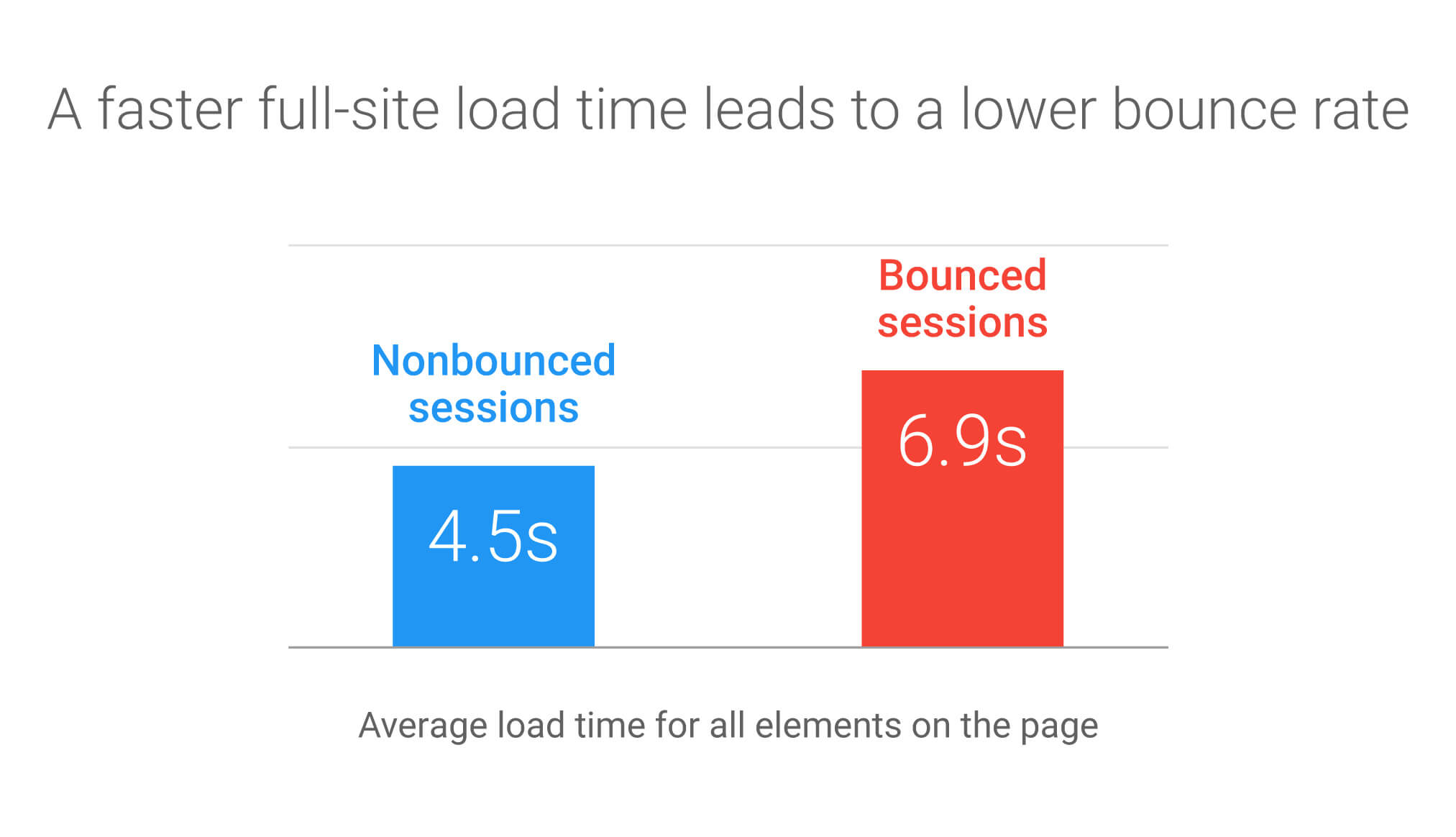
Hence, one of the best things you can do to stay ahead in this game is to optimise your website speed. An optimisation solution can control the heavy content on the site so that when customers use it, the page loads much quicker. This improves the load times for the main page and every website page.
It was found that the slower the website, the lesser the visitor traffic time. And less time spent on the website inevitably means a higher bounce rate and reduced conversion rate.
If speed makes such a massive difference in the website ranking and page visits, creating dedicated programmes and resources to optimise it only makes sense.
To boost your conversion optimisation efforts, ensure your website loads quickly, especially during high-traffic periods, and consider offering incentives like free shipping.
Ultimately, even if your images are the best quality or the website design is modern and up to date, none of the upgrades matter if the page speed is slow, and it hampers the increased conversion rate eCommerce can achieve.
However, note that the incorrect way to check your website speed is to test only the home page in one location. The correct way to test the speed is by clicking on each page and testing the loading time required. Use various browsers and locations to get accurate speed results for your eCommerce page.
3. Create The Simplest eCommerce Checkout Process Ever
You are a customer and like checking online stores for new clothing or jewellery. You stumble upon a cool outfit, and it’s “love at first sight,” so you decide to buy the dapper dress.
Once you click on the product and “Add To Cart,” a popup asks you to rate the store. After clicking that, another popup asks you to register your phone number and email ID for a newsletter. Next, there was yet another distraction, with the final cart nowhere in sight.
Frustrated, you convince yourself that one cool dress is not worth the hassle. And just like that, you click out of that store and resume scrolling on social media. Session recordings and heat mapping repeatedly show that people lose patience if they go through a lengthy checkout process.
If there’s one change you want to bring to your online store, simplify the complicated checkout process by reducing the fillable fields and consider an A/B test to refine it further. Of course, b b testing multiple times before applying but remember that more customers are likely to go away if this process is too complicated.
As a seller, you may want to highlight every unique feature with multiple buttons, but this might be too much information for a customer.
For example, you must emphasise that the website has many payment options—Amazon Pay, PayPal, etc. However, displaying options like credit card payments before the actual checkout page only creates clutter and cart abandonment.
A busy and confusing checkout process almost always dissuades customers from proceeding further. Prevent this with a simplified checkout form by introducing fewer buttons- “View Cart” and “Checkout” buttons should be enough for most product pages.
4. Don’t Complicate The eCommerce Webpage Design And Layout
Let’s put it this way: easy navigation allows you to increase sales. Customers need to know what they are looking for as quickly as possible. Potential customers who do not understand your web page design and layout will not think twice before moving to a competitor’s page.
This is why you must spend time carefully building each aspect of the website design. Also, work on the layout to get the edge in this winner-takes-all competition. Those new to eCommerce may want to stand out with unique layouts and innovative designs. We respect the thought behind them, but the layout is not where you should try out intricate new formats.
Reserve your creativity for other aspects of the business, but keep this section as simple as possible to facilitate the easiest content conversions for eCommerce.
The goal is to make the website easy to navigate for people of all age groups or technological abilities. You don’t have to copy the same design used by vast and popular brands.
Here’s an idea. Look at the biggest names in the eCommerce industry for best practices and study the features customers most often react to. Market leaders often have a well-functioning search button and a variety of product categories. These product pages with categories help customers select the exact item they are looking for.
Leading companies also include recommendations based on the products viewed to increase visibility for other products.
5. Create A Sense Of Urgency
Even though this may not seem important, making the customer feel some loss associated with not purchasing the product can improve the eCommerce conversion rate.
You can use plenty of plugins to test this out and select the best one you think will achieve the desired action for the business and improve eCommerce conversion.
Having an intuitive call-to-action button can make a big difference.
If you produce scarcity in eCommerce, people subconsciously feel the need to avoid loss at any cost. This is how they may be influenced to urge them to make a purchase quickly. With scarcity, you convey that only a limited number of products are available, and once they are over, you don’t know when the next batch will arrive.
So, if the customer likes the product, they might expedite purchasing to avoid missing out on it. For example, creating and providing coupons for a limited time can encourage customers to check out before a particular time.
The customer benefits because they get the product at a reduced amount, and you get the sale in the time frame you’ve decided. This information was last updated recently. When the coupon is about to expire, it creates a sense of urgency, and online shoppers are likelier to buy within the designated time.
So remember to use attractive cta buttons, images, and text! They can make all the difference!
6. The Need For Social Proof
Adding social proof is one of the best ways to increase your eCommerce conversion. When a new visitor approaches your website, an essential feeling they need to feel is trust. Unless the visitor trusts the information you put on your landing pages or product pages, they won’t proceed further.
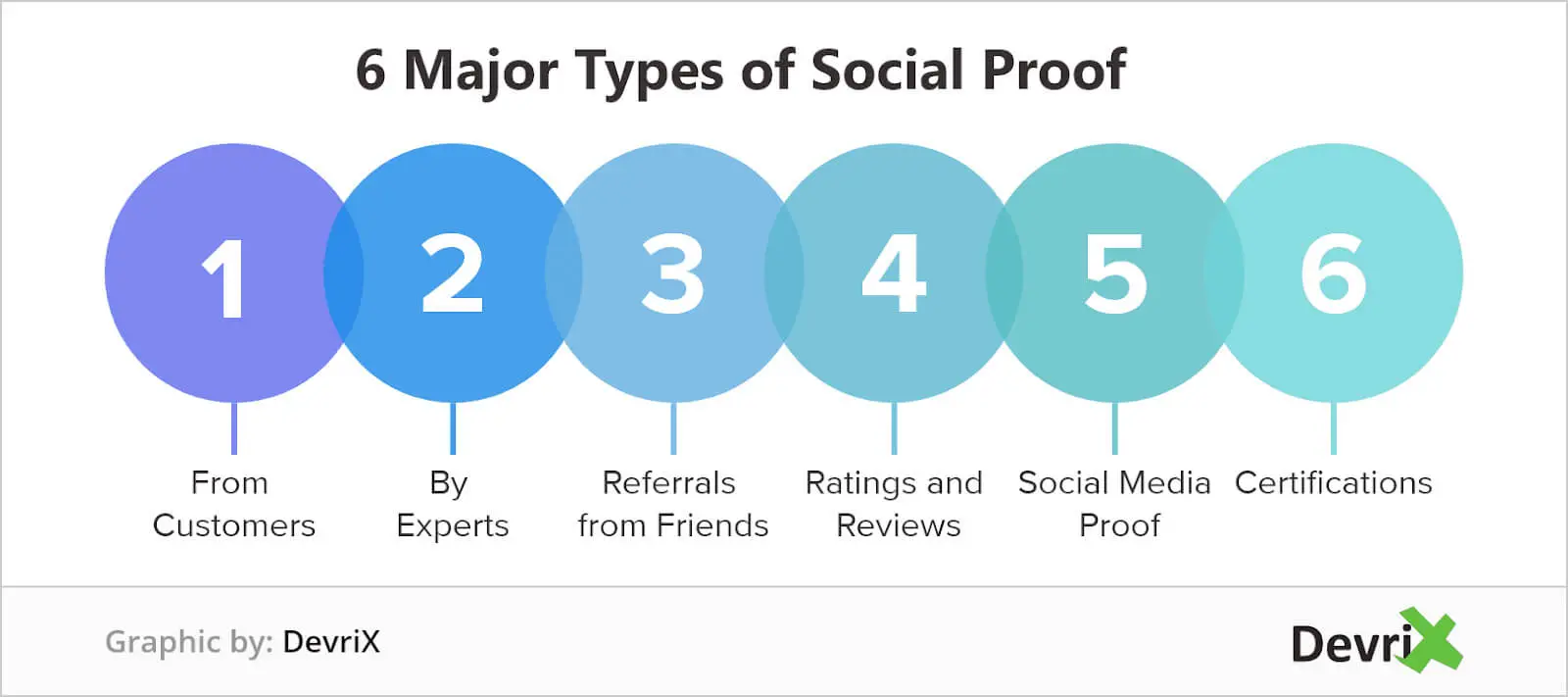
Gary Bente, Odile Baptist, and Haug Leuschner conducted a study, “ Influence of seller photos and reputation on buyer trust.” This study highlighted the importance of reducing uncertainty in the customer to encourage purchase and build trust.
Interestingly, it was found that customers preferred to buy from supposedly untrustworthy sellers rather than sellers with no information at all. This shows the importance of building familiarity.
A powerful example of social proof in eCommerce is testimonials and product reviews. The biggest and most successful platforms have an open feedback system where customer reviews can share their experiences on sales pages, which can increase the eCommerce conversion rate.
Online shoppers are constantly researching the best products and will purchase a product only if they are convinced.
If an eCommerce store displays only positive online reviews, customers can smell something fishy immediately. So, instead of aiming for 100% positive reviews, work towards getting more people to interact with each other on your platform. For example, your landing page’s video reviews and real testimonials will improve your eCommerce conversion rate.
A study by Nielsen found that 84% of people trusted word-of-mouth information from friends, family, colleagues, and peers the most. Thus, this type of advertising or social proof cannot be ignored if you want visitors to complete their purchase. So, bring out all the social proof you have collected over the years and
7. Add A Live Chat Feature
An instant generation needs instant query resolution and customer feedback support. Introducing a feature like live chat support in an eCommerce site can dramatically change the user experience. Although the customers know that the chatbot isn’t a human who can answer all kinds of queries, it provides reassurance to the user.
If they need assistance on your website, they will appreciate the experience of instant replies to queries. Simple messages from the chatbot can help make better purchase decisions quickly. This is a beneficial feature because live chats can take care of queries 24/7, thus saving your time and finances by investing in a 24/7 customer service team.
Apart from increasing engagement and sales, they also introduce visitors to new offers and products.
8. Include Only High-Quality Images
This one is straightforward- the better the quality of the pictures and videos, the higher the eCommerce conversion rates.
When selecting a product, you cannot physically see and touch it; your only reliance is on the images and videos the seller provides. So, this becomes an essential factor for most consumers because they like to see detailed and engaging photos before deciding to purchase.
First, you’ll need a high-quality camera to capture high-quality product images from all angles. Try to express the product dimensions in the photograph using light and shadows to create depth. The images should be aesthetically appealing and relevant to the description, making it easier for customers to decide.
9. Make Use Of Cart Abandonment Software
Are you noticing several customers strolling into your eCommerce store, placing many items in the cart, and disappearing into thin air? If you face this issue, abandoned cart software can significantly help you improve your sales conversion rates.
This software functions if the visitor has entered their email ID, placed items in the cart, and left them before purchasing, potentially hindering increased eCommerce sales conversion rates. Tools like BigCommerce send gentle emails to customers to remind them of the things sitting in their carts.
This is an effective way to follow up with customers to encourage them to pick up where they left the shop. If necessary, you can add a discount coupon to the email to give them some incentive to purchase the order.
10. Check The Reasons For An Abandoned Cart
A survey of 1799 shoppers on Baymard.com listed why people had abandoned carts instead of purchasing. The answer “I was just browsing” was removed from the answer list. But what do you think was the top reason? An overwhelming majority of people answered that extra shipping costs, tax, or other fees were too high; thus, they abandoned the cart.
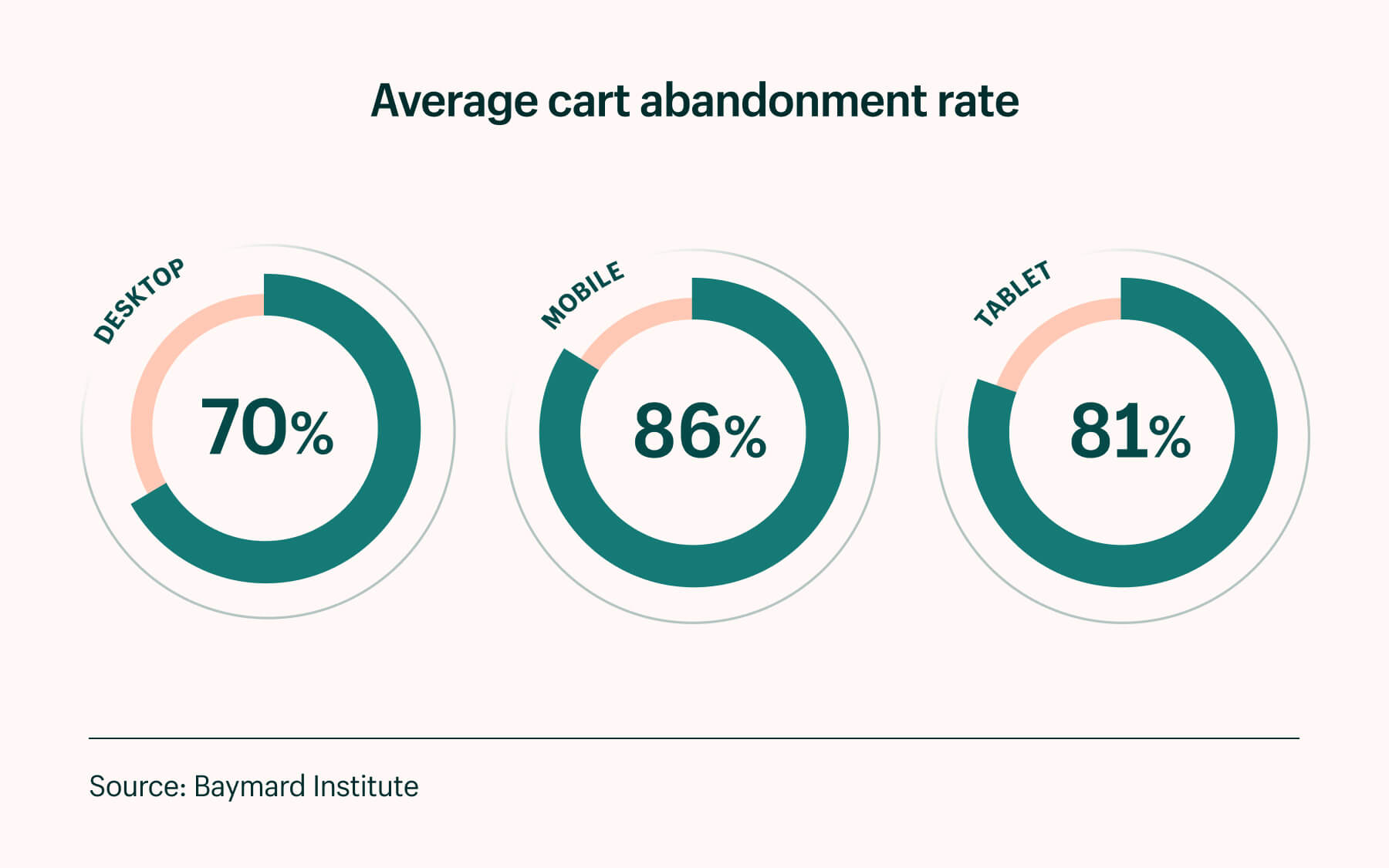
The third most common reason was a checkout process that was too long or difficult to execute. That sounds fair enough. As discussed earlier, the shorter the checkout process, the better your chances of improving your eCommerce conversion rates are.
The second most common reason was “the site wanted me to create an account.” This point is essential, and we’d like to highlight why offering both guest checkout and customer accounts is essential. While you would love to sell to the same customers repeatedly, realistically, this doesn’t always happen.
There will be one-time customers who will never revisit your store. Some might be simply curious, and others may buy gifts for a friend, so they might not even be interested in your existing customers’ products. No matter why the customer doesn’t want to make an account, don’t make it compulsory to create one.
In doing so, you are only reducing your guest checkout options and eCommerce conversion rates
11. Provide As Much Information As Possible
Do not forget to provide your customers with the information they can use. And while there is such a thing as oversharing, tell your customers everything they need to know when it comes to your customers. Why is there a need to share all information, you ask?
Look at it this way- would you like it if you purchase a product and later find it non-returnable? Maybe the item you bought wasn’t ideal, but now you can’t even return it. You’d agree that these scenarios can look bad for a store.
As a general rule, write detailed product descriptions and pack them with all the details regarding the items on sale. If the customers cannot see and physically hold the product, the least you can do is describe them to the fullest. Sometimes, selling a product without several details may be impossible.
Details like ingredient lists, types available, sizes, allergies, warning signs, precautions, and aftercare must be included.
After all, you are the best person to explain the product to customers. So, you should be able to explain it well to curious customers who have landed on your page for the first time. You can also include an FAQ section in which you’ll answer all the common queries customers have and provide vital information.
Providing logistical information, such as payment options and delivery times, can enhance customer loyalty, delivery charges, or any additional fee for online purchases.
Conversion Rates For eCommerce Websites
Maybe your eCommerce conversion rate is not as high enough as you want. Or perhaps you’re looking to boost your already established business. No matter what kind of eCommerce business you run, these tips will help you to increase conversions.
While these steps should be enough to boost eCommerce conversions for your web page, keep looking for new and better methods to improve the traffic and conversion rates. Over time, you will realise the strategies that work best for you, but in the meantime, keep experimenting.
Try offering free shipping to boost conversions and see how that performs. You can also have influencers and celebrities endorse your product on social media platforms. The list is endless.
Feel free to ask questions by reaching out to our team. Until next time, good luck!

